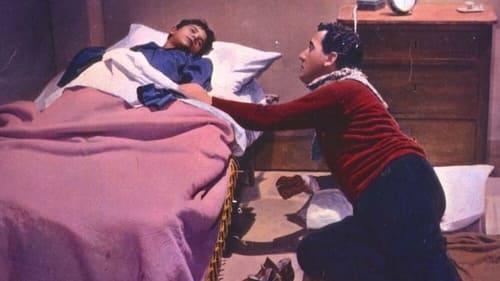Folco Quilici
Nacimiento : 1930-04-09, Ferrara, Emilia-Romagna, Italy
Muerte : 2018-02-24

Director
In the First World War, alongside the men fought an army of animals. Mules, oxen, dogs, horses, pigs, pigeons were used for moving units and materials, communications, and for the support of the troops. The forced cohabitation with men closer to each other in a possible fate of death and suffering: officers and enlisted men had the opportunity to give and receive affection, but also to deal with beings weak and completely dependent on their . Animals in the Great War offers an unconventional story of dramatic conflict, through letters, diaries and photographs taken by the fighters, and collected in the book that Lucio Fabi has derived from his research, The good soldier mule (ed. MURSIA). A documentary rebuild memories, stories, episodes of real life relationship, in and out of the trench, between humans and animals, including incredible moments of absolute serenity and tenderness, alternating the background of one of the most tragic periods in modern history.

Self

Director
Marble from all parts of the Empire: yellow from Numidia, red from Peloponnese, pink alabasters from Algeria, blood red from Thebaid. A strictly scientific film, inspired by the art "Marmora Romana" by Raniero Gnoli, tells of the "hunters of marbles" yesterday and today in search of deposits sometimes more precious than gold, those of the "shining stone", that over the centuries, has been carved to enhanced the divine gift of emperors, to have portraits of splendid women, warriors, slaves, mythological beings and divinities. Powerful and stupendous works like those that made imperial Rome unique, with marbles from all over the empire

Director
Four buddies set out on a three-week deep-sea fishing holiday in the Amazon and run into trouble.

Director

Director

Writer

Director

Writer

Director

Director

Writer
Italian documentary

Director
Italian documentary

Director

Director

Writer

Director

Director

Writer

Director

Writer

Director

Director

Director

Writer

Director

Director
The film documents modern slave trade through a number of African countries, under dictatorship rule. The filming was conducted both in public places, and sometimes with the use of hidden cameras, for high impact scenes of nudity, sex, and violence - and a few surprises, as slaves made out of peregrins to Asia, and slave traders paid in traveller checks.

Writer
Filmed in French Polynesia with a Hawaiian cast, the story revolves around the adventures and romances of a young Polynesian boy as he grows up. As a child he raises and trains a baby shark as a pet, which he shares with his island playmate Diana. After a decade the three are reunited, but the world has changed: Tiko and Diana have become adults; the shark has become a dangerous man-eater; and civilization has encroached on the tropical island.

Director
Filmed in French Polynesia with a Hawaiian cast, the story revolves around the adventures and romances of a young Polynesian boy as he grows up. As a child he raises and trains a baby shark as a pet, which he shares with his island playmate Diana. After a decade the three are reunited, but the world has changed: Tiko and Diana have become adults; the shark has become a dangerous man-eater; and civilization has encroached on the tropical island.

Writer
Adaptación de la novela de Edmondo De Amicis. Un chico italiano viaja como polizón en un barco a la Argentina para encontrar a su madre.

Director
Adaptación de la novela de Edmondo De Amicis. Un chico italiano viaja como polizón en un barco a la Argentina para encontrar a su madre.

First Assistant Director
El maestro suplente Impallato descubre a un alumno con unas características excepcionales para la canción lírica y lo explota para obtener fama y riqueza.

Producer
A 1955 Italian independent film, released in the USA in 1956, which is basically a travelogue telling four stories, each about a different island in the South Pacific. Native customs, tribal rites,ceremonial procedure, courtships, and feats of strength and courage are depicted. The test of courage, for males, on one island , is a leap from a high wooden tower to the ground with a thin vine wrapped around their ankle breaking the fall at the last minute. The first bungee-jumpers?

Screenplay
A 1955 Italian independent film, released in the USA in 1956, which is basically a travelogue telling four stories, each about a different island in the South Pacific. Native customs, tribal rites,ceremonial procedure, courtships, and feats of strength and courage are depicted. The test of courage, for males, on one island , is a leap from a high wooden tower to the ground with a thin vine wrapped around their ankle breaking the fall at the last minute. The first bungee-jumpers?

Director
A 1955 Italian independent film, released in the USA in 1956, which is basically a travelogue telling four stories, each about a different island in the South Pacific. Native customs, tribal rites,ceremonial procedure, courtships, and feats of strength and courage are depicted. The test of courage, for males, on one island , is a leap from a high wooden tower to the ground with a thin vine wrapped around their ankle breaking the fall at the last minute. The first bungee-jumpers?

Director
A team of doctors sets out through a steamy African jungle to check an outbreak of sleeping sickness.

Writer
This 95-minute, full-color documentary was released in the U.S. as Sixth Continent. That continent is Africa -- or, more specifically, the coast of Ethiopia. Director Folco Quillici takes his cameras deep, deep into the waters near the coastal islands of Dalach, observing the passing parade of sea life on an up-close-and-personal basis. Particularly thrilling is a shark attack and its aftermath, with the cinematographers obviously in the thick of things. Gian Caspare Napolitano provides the narration, while the lush, evocative musical score is the handiwork of Roberto Nicolosi.

Director
This 95-minute, full-color documentary was released in the U.S. as Sixth Continent. That continent is Africa -- or, more specifically, the coast of Ethiopia. Director Folco Quillici takes his cameras deep, deep into the waters near the coastal islands of Dalach, observing the passing parade of sea life on an up-close-and-personal basis. Particularly thrilling is a shark attack and its aftermath, with the cinematographers obviously in the thick of things. Gian Caspare Napolitano provides the narration, while the lush, evocative musical score is the handiwork of Roberto Nicolosi.














